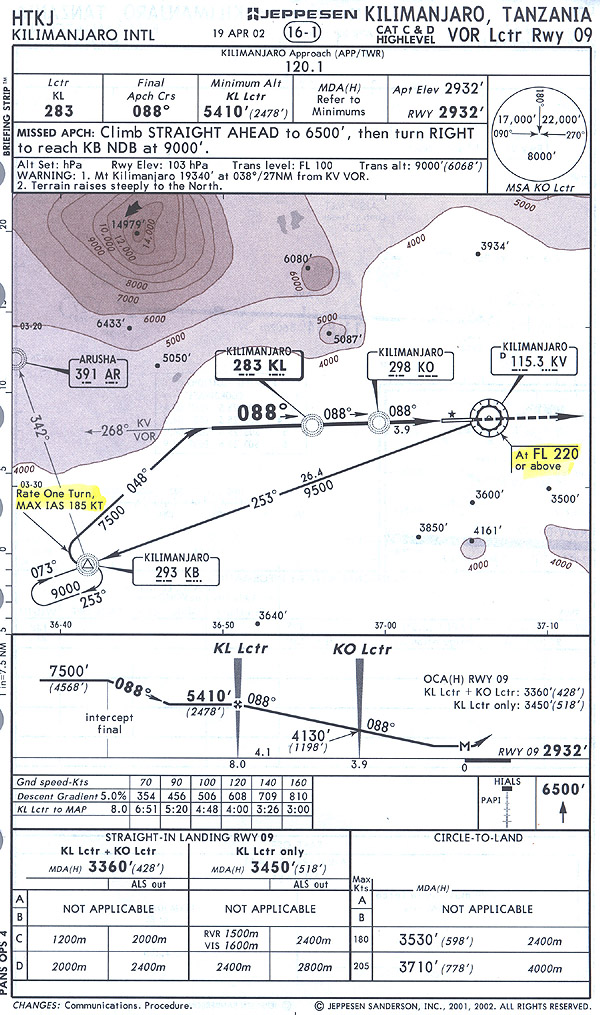 |
|
|
This is one of those approaches that can kill you
if you are not paying attention. See the note regarding the minimum
crossing altitude at the "KV" Flight Level 220 is a pretty high altitude
when it comes to instrument approach procedures. If descent to 9,500
was made a bit early, you might become "one" with the 14,979 foot mountain
nearby. An arrival from europe will take you over the mountain.
Take note of the MSA diagram in the upper right hand corner of the chart.
Jeppesen is pretty good at providing the right information. It is,
however, necessary that we become acquaitnted with the information they
provide.
 |
|
|
Once you cross Kilimanjaro VOR at 22,000 feet, you
have only 26.4 miles to be established at 9,500 feet and slowed to 185
knots. For most jets, the speed during descent at 22,000 would be
250 to 300 knots indicated. The true airspeed would be a bit higher.
This gives you about 5 minutes to descend 12,500 feet and reduce your speed
by over a hundred knots. The terrain clearance between the Kilimanjaro
NDB and the final approach course is based on an indicated airspeed of
no more than 185 knots. Remember, turn radius varies with the square
of the speed. Making this turn at 250 knots results in a turn radius
that is about 4 times what it would be at the required 185 knot speed.
This would put you too far north for your own good.
Add fatigue to the mix and mistakes become more
likely. This place is between six and a half and eight hours from
southern Europe, so chances are you have been had a long day before you
even attempt this approach. In situations like this, it is preparation
and good communication with your fellow crewmembers that will prevent disaster.
The departure procedures for this airport have an equal potential to hurt
you if you do not understand where the mountains are. Think before
you act and you will be more likely to survive.